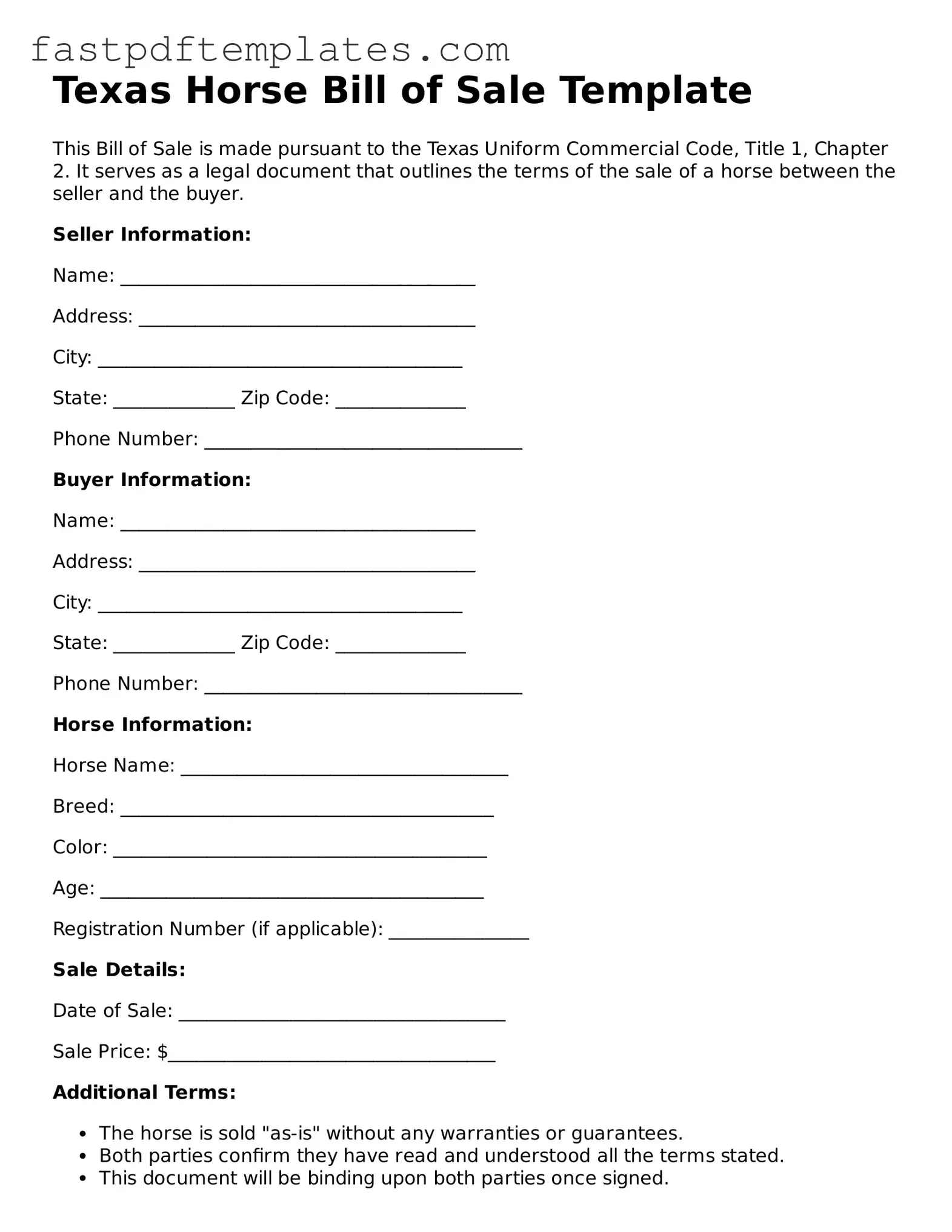Texas Horse Bill of Sale Template
This Bill of Sale is made pursuant to the Texas Uniform Commercial Code, Title 1, Chapter 2. It serves as a legal document that outlines the terms of the sale of a horse between the seller and the buyer.
Seller Information:
Name: ______________________________________
Address: ____________________________________
City: _______________________________________
State: _____________ Zip Code: ______________
Phone Number: __________________________________
Buyer Information:
Name: ______________________________________
Address: ____________________________________
City: _______________________________________
State: _____________ Zip Code: ______________
Phone Number: __________________________________
Horse Information:
Horse Name: ___________________________________
Breed: ________________________________________
Color: ________________________________________
Age: _________________________________________
Registration Number (if applicable): _______________
Sale Details:
Date of Sale: ___________________________________
Sale Price: $___________________________________
Additional Terms:
- The horse is sold "as-is" without any warranties or guarantees.
- Both parties confirm they have read and understood all the terms stated.
- This document will be binding upon both parties once signed.
Signatures:
Seller's Signature: ______________________ Date: ___________
Buyer's Signature: ______________________ Date: ___________
This document may be used for the sale of horses in the state of Texas and is recommended to be kept in a safe location for future reference.
